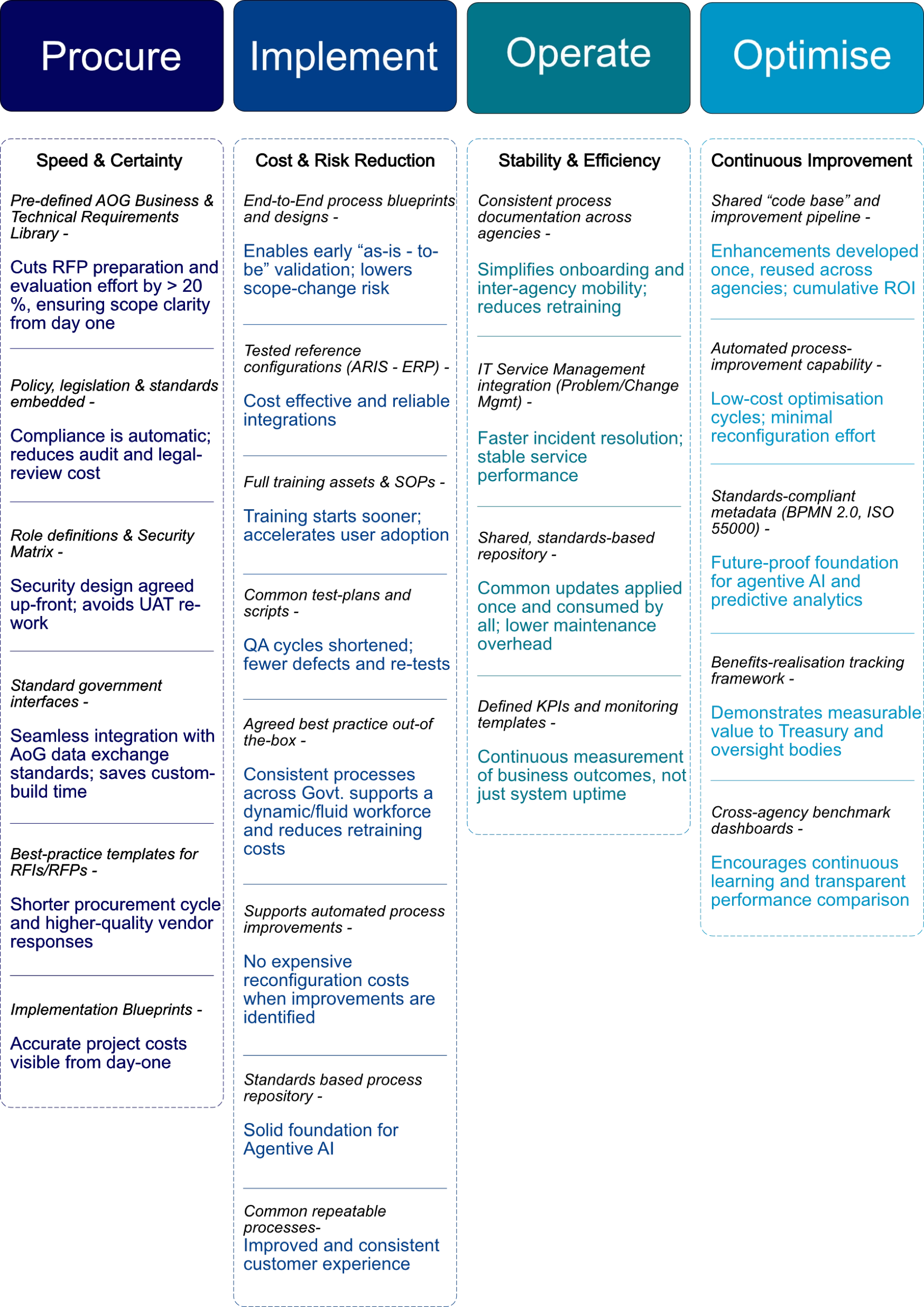Back-office Transformation
What is Back-office Transformation ?
Back-office transformation modernises and integrates the internal business systems that underpin government operations. These systems include; finance (FMIS), procurement, human resources (HRIS), payroll, enterprise asset management (EAM), workplace health and safety (WH&S) , and IT service management (ITSM). Often referred to collectively as Enterprise Resource Planning (ERP) systems, these systems enable data-driven, repeatable best-practice processes that improve efficiency, transparency, and consistency across agencies. They support smarter decision-making and enhanced service delivery.
How is Back-office Transformation differant today?
Historically, Govt. entities have hosted and managed their back-office systems in-house. Over time, these systems were often heavily customised to accommodate each entity’s unique operational needs, resulting in complex, high-maintenance environments.
Globally, however, there has been a decisive shift toward a “cloud-first” strategy, where standardised solutions are securely hosted in large data centres and configured using supplier specific, best-practice models. This approach has delivered measurable benefits—lower operating costs, improved reliability, and stronger returns on investment (ROI).
As part of the Inland Revenue’s Transformation Programme, the NZ Government acquired a back-office best-practice process model originally developed and successfully implemented by the NSW Government. Over the past eight years, this model has been localised, validated, and refined for New Zealand’s public-sector context, and now stands as the All-of-Government (AoG) benchmark for back-office process and system design and is refered to as the AOG Common Process Model or CPM.
Suppliers of back-office systems are in the process of configuring CPM compliant solutions for public sector entities to purchase through the DIA Marketplace. These solutions will also be compliant with the relevant local and international standards and incude the required interfaces to external systems e.g. Treasury, Banks, IRD, MBIE, procurement portals etc. Additionally, suppliers will be including costs and timeframes required to implement their offerings.
The table to the right highlights the CPM Benefits through the back-office lifecycle .

How does this translate into measurable project savings?
Although Azimuth played a key role in developing the Common Process Model (CPM) for the Marketplace—designing and managing the All-of-Government (AoG) Working Groups for Finance, Procurement, HR, and Payroll—our primary value and focus lie in the pre-procurement (requirements definition) and implementation stages of transformation, as this is where agencies realise the greatest benefit.

- Leveraging the CPM eliminates time-consuming Requirements’ workshops and replaces these with repetitive, rapid validation of Best Practice. The CPM contains Best Practice Business Requirements, thus reducing RFP time and cost and provides the foundation for the final E2E Blueprints.
- The completeness of Requirements and pre-Design documentation in the CPM enhances the quality of the Marketplace procurement process and lays the foundation for a better business outcome.
- Agreed Best Practice is embedded within the CPM – this accelerates the secondary procurement and final blueprint phase. For the creation of the Operating Model and the subsequent Organisational Design, CPM provides most of the building blocks.
- The completeness of the design and requirements artefacts simplify the planning of Build sprints and increases the ability to run sprints partially in parallel. Further time and cost gains of up to 20% can accrue if a Solution is procured which permits automated configuration directly from ARIS, SAP for example. Additionally, the CPM provides the core data for the final Test Scripts.
- Views and reports enhance Deployment planning and support the readiness for Releases so quality is enhanced, but Deployment itself is not a lengthy step so gains are not immediately realisable in Deployment. Some time and cost savings accrue from reduced staffing of the planning processes.
- Consistent process documentation is available to support IT Service Management (e.g., Problem Management) and Continuous Improvement initiatives.
Our Accelerator Methodology
Azimuth Consulting has been assisting and guiding government agencies to select and implement back-office solutions for over 40 years.
Throughout its work with central and local government, Azimuth has championed not only the adoption of proven and open, global methodologies and solutions but also the deployment of common and more collaborative, agile methods across a more ‘joined-up’ public service.
Recently, we have engaged with agencies who face upcoming back-office system and process upgrades. Azimuth team members know that the technology-agnostic Common Process Model (CPM) supported by DIA’s BODTS will underpin the widespread adoption – and controlled adaption – of common processes as back-office systems are enhanced and optimsed.
We know too that the CPM is a fundamental pattern-breaking resource and we are committed to assisting its proper deployment. Accordingly, Azimuth has invested in the appropriate knowledge, methodologies, training and partnerships to assist government to leverage its investment in this vital foundation artefact.
© 2025 Azimuth Consulting Limited
Contact: info@azimuth.co.nz -or- Phone 04-499-1040
